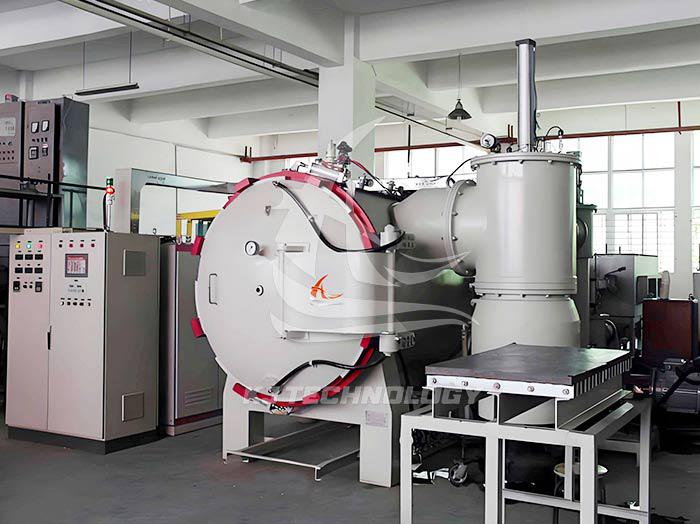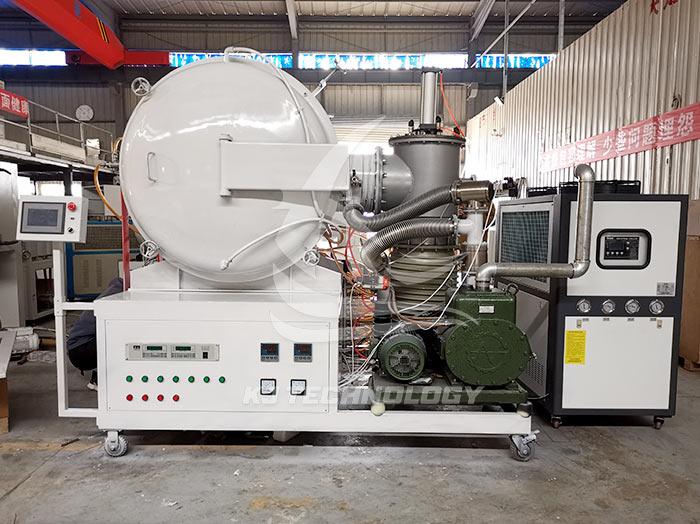What materials can be sintered in a laboratory powder sintering furnace?
 08-08-2025 Author: KJ technology
08-08-2025 Author: KJ technology
The laboratory powder sintering furnace is a multifunctional high-temperature processing equipment that can sinter various types of materials, including metals, ceramics, composite materials, and some special materials. The following are the main types of materials that can be sintered in laboratory powder sintering furnaces and their specific applications:
1. Metal materials
Iron based alloys:
Applications: such as stainless steel, tool steel, high-speed steel, etc., high-density and high-strength metal parts can be prepared by sintering.
Characteristics: Iron based alloys have good mechanical properties and wear resistance after sintering, and are widely used in fields such as mechanical manufacturing and automotive industry.
Copper based alloys:
Application: such as bronze, brass, etc., used to prepare parts with excellent conductivity and thermal conductivity.
Characteristics: Copper based alloys have high electrical and thermal conductivity after sintering, making them suitable for the electronic and electrical fields.
Aluminum based alloy:
Application: For example, aluminum alloy powder metallurgy products are used to prepare lightweight and high-strength structural components.
Characteristics: Aluminum based alloys have low density and good corrosion resistance after sintering, and are widely used in fields such as aerospace and automotive lightweighting.
Refractory metals:
Applications: such as tungsten, molybdenum, tantalum, niobium, etc., used for preparing high-temperature alloys, hard alloys, etc.
Characteristics: The sintering of refractory metals requires a high-temperature environment, and the sintering furnace needs to have high temperature control accuracy and good insulation performance.
noble metal:
Applications: such as gold, silver, platinum, etc., used for the preparation of jewelry, electronic components, etc.
Characteristics: Precious metal sintering needs to be carried out in an inert gas or vacuum environment to prevent oxidation and contamination.
2. Ceramic materials
Oxide ceramics:
Application: Used for preparing high-performance ceramic parts, such as alumina (Al ₂ O3), zirconia (ZrO ₂), etc.
Characteristics: Oxide ceramics have high hardness, wear resistance, and corrosion resistance after sintering, and are widely used in fields such as electronics, aerospace, and energy.
Nitride ceramics:
Applications: such as silicon nitride (Si ∝ N ₄), aluminum nitride (AlN), etc., used for the preparation of high-temperature structural ceramics and electronic ceramics.
Characteristics: The sintering of nitride ceramics needs to be carried out under a high-temperature nitrogen or ammonia atmosphere to promote nitriding reaction and densification.
Carbide ceramics:
Applications: such as silicon carbide (SiC), tungsten carbide (WC), etc., used for the preparation of hard alloys and wear-resistant parts.
Characteristics: The sintering of carbide ceramics needs to be carried out in a high-temperature carbon atmosphere or vacuum environment to prevent carbon loss and oxidation.
3. Composite materials
Metal ceramic composite materials:
Application: such as metal based ceramic composites (MMCs), used for preparing high-performance structural and functional components.
Characteristics: The sintering of metal ceramic composite materials requires simultaneous control of the sintering behavior of both metals and ceramics to achieve good interface bonding and performance optimization.
Ceramic ceramic composite materials:
Application: such as multi-layer ceramic capacitors (MLCCs), used for preparing high-performance electronic components.
Characteristics: The sintering of ceramic ceramic composite materials requires controlling the sintering shrinkage rate and interface reaction of different ceramic layers to ensure the reliability and stability of the components.
4. Special materials
nanometer material:
Application: such as nano metal powder, nano ceramic powder, etc., used for preparing high-performance nanomaterials.
Characteristics: The sintering of nanomaterials needs to be carried out at low temperatures to prevent grain growth and performance degradation. The sintering furnace needs to have high-precision temperature control and rapid cooling function.
Gradient functional materials (FGMs):
Applications: such as thermal barrier coatings, biomedical materials, etc., used to prepare materials with specific functional gradients.
Characteristics: The sintering of gradient functional materials requires controlling the sintering behavior and interfacial reactions of different component layers to achieve continuous changes in functional gradients.
Porous materials:
Application: such as foam metal, porous ceramics, etc., used to prepare lightweight, high specific surface area materials.
Characteristics: The sintering of porous materials requires control of porosity and pore structure to optimize material performance and applications.
5. The influence of sintering process on material properties
Temperature control:
Influence: Temperature is a key factor affecting the sintering effect. Excessive temperature may lead to material overburning and grain growth; If the temperature is too low, it may lead to insufficient sintering and high porosity.
Measure: Adopt a high-precision temperature control system to ensure temperature uniformity and stability.
Atmosphere control:
Influence: The atmosphere has a significant impact on the sintering behavior and properties of materials. For example, an oxidizing atmosphere may lead to metal oxidation; A reducing atmosphere may promote metal reduction and densification.
Measure: Select a suitable atmosphere (such as air, inert gas, vacuum, etc.) based on material requirements, and control the purity and flow rate of the atmosphere.
Pressure control:
Influence: Pressure can promote contact and diffusion between material particles, improve sintering density and mechanical properties.
Measures: Adopt processes such as hot pressing sintering and isostatic pressing sintering, and apply pressure during the sintering process.








